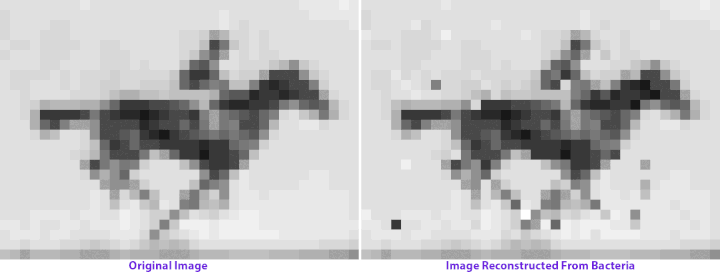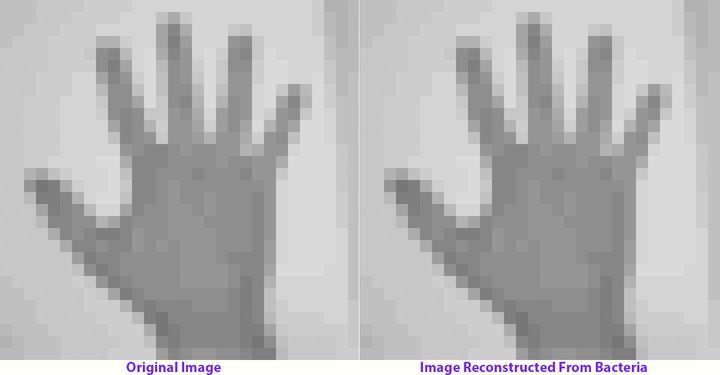An image of a hand and a GIF of a horse running have both been encoded into the DNA of a bacteria.
Using a technique that involves a process called gene editing, the team led by Seth Shipman from Harvard University were able to store the data inside the DNA and then extract it again.

It’s an astonishing achievement because while it’s not the first time we’ve been able to store data within DNA it is the first time scientists have been able to store data inside a living organism.
To make matters even more complicated, the data wasn’t delivered to just one cell but several. This meant that when they re-compiled the data they had to restructure it using fragments from different places.
So how do you store data inside bacteria? Well this is where things get particularly cool.
Shipman and his team first took the data and encoded it inside DNA, they then used an electrical current to break open gabs in the cell walls and allowed the DNA to slip inside.
To make sure that the E.coli bacteria didn’t reject the DNA they made sure that it looked and behaved like the kind of material that E.coli would normally consume.
Each cell contained a piece of information e.g. a few pixels from one of the moving images, or several pixels from the picture of a hand.

To then retrieve the data the team ran the E.coli bacteria through a DNA sequencing machine and were able to piece it all back together like a puzzle.
What they found was that they got 90% data accuracy, and astonishing achievement considering the difficulty of the task.
While the team aren’t looking to turn this into a fully fledged data storage solution what they are looking to do is create ‘molecular recorders’.
Effectively they create cells that would encode what they’re doing by writing it to their own genome. Or to put it another way, the cell would be live blogging itself.
